
Respect
News
-
Workshop on Fire Safety in High-Rise Buildings: Management Strategies and
RESPECT and SAMSHODHAN announces one-day workshop on Fire Safety in High-Ri.... -
KEYNOTE SPEECH- Member, National Disaster Management Authority to Deliver K
Shri J K Sinha, IPS(rtd), Member (MOS status), National Disaster Management.... -
Maj.Gen (Dr) Bansal, Member, NDMA, TO DELIVER KAYNOTE SPEECH
Maj. Gen (Dr.) J K Bansal, Member, National Disaster Management Auhtority, .... -
IFSI , Illinois University,(USA) KNOWLEDGE COLLABORATION
A contingent four global expert on emergency and disaster management under .... -
Emergency Operations Center (EOC) & Disaster Response Operations
RESPECT has organised an International Conference on Emergency Operations C....
Photo Gallery











Hot Topics
-
Business Continuity Program (BCP) or Continuity of Operation (COOP) program
Business Continuity Program (BCP) or Continuity of Operation (COOP) program Indian vulnerabilities have multiplied during last two decades due to increasing sensitivity from man-made and natural disasters.
It has never been so urgent then under current circumstances that private and public organizations plan, establish and practice business continuity (BC) or continuity of operations (COOP) program.
Institutionalized approach for planning and establishing COOP has become essential to suBusiness Continuity Program (BCP)- seven simple steps
1. Identify what will have negative impact on operations, and leverage opportunities to mitigate those things.
2. Identify and constitute a team of experts and decision makers for program planning.
3. Identify alert incident based alert / notification protocol and rehearse alerting mechanism at least once in three months.
4. Identify and document the critical organizational functions and an alternate site where they can be performed if necessary.
5. Communicate with stakeholders and employElection results on Cloud- In India
With increasing affordability of PCs and internet penetration, India is all set to have 121 million internet users by December 2011, a study by internet and Mobile Association of India (IAMAI) and IMRB has said. With this internet use in India is expected to enter a critical period of growth with the possibility of becoming the largest internet using country in the world in this decade. Indian eGovernance policy and plan need to address exponential increase in users logging into Government websites for various services of which few services like election results attracts a sharp spike users for a short time. As more people go online to see polling results on Election Day, the increased traffic can wreak havoc on IT infrastructure not designed for huge spikes in demand. Emerging technologies and cloud hosting offers a highly reliable and scalable solution to avoid crashes which are agonizing an irritating.Neighborhood Watch:- A New Role of Community in Managing Terrorism in India
Increased sensitivity to terrorism has changed vulnerability map of each state in India, specifically Gujarat, Maharashtra, Andhra, Tamilnadu, Kerala, Orissa and Goa. These states already have undue share of natural hazards and suffered maximum compared to any other state in India. Indian unique socio-economic diversities span and hostile neighborhood demands for wide spread monitoring and surveillance up to village level - which has become impossible to implement using conventional means i.e. police forces or electronic sensors. But this task can be achieved with community participation through programs like neighborhood watchSTATE WIDE AREA NETWORKS vs ICT NETWORK FOR EMERGENCY MANAGEMENT
The State Wide Area Network (SWAN) design and implemented under NeGP allows service disruptions during exceptional emergencies or events under specific SLA clause (force majeure). Design criteria for disaster response communication network are absolutely different from the criteria adopted for SWAN design as continuous availability of communication channels is more crucial during Force Majeure conditions than that of normal or study state situation. While designing ICT infrastructures for emergency response and disaster management state Government need to redefine the service requirements during sever incident or emergencies by accommodating exiting SWAN resources for use during steady state or normal situation.Gujarats Green Initiatives
While the Infrastructure necessary to meet development needs are being planned, designed and built in each sector it is very crucial that such design investments are being made with climate change considerations, for controlling GHG emissions during the infrastructure life-time. The huge potential offered by the modern technologies (ICT, automation etc) innovations for controlling GHG (Green House Gases) and enhancing productivity remains un-utilized in most of the states. I have been closely associated with several state Governments in India and abroad assisting them in ICT related developmental projects. My close observations revels some of the unique and far-sighted technology based - initiatives taken by Gujarat state for accelerating economic growth and at the same time controlling Green House Gases. The description given in the paper attached is based on my personal observation, perception and understanding.Developing ICT infrastructure for Disaster Risk Reduction (DRR) in India
reliable disaster prevention and mitigational measures. ICT provides capabilities that can help people grasp the dynamic realities of a disaster more clearly and help them formulate better decisions more quickly. Advancement in ICT offers extremely effective decision support system, fail safe communication, data and computation resources that can be used to effectively coordinate a large number of geographically dispersed participants and assets, to exchange a wide variety of types of information, and to evaluate many scenarios and responses all of which are changing dynamically. This paper aims to address the role of ICT infrastructure as a framework for facilitating disaster management. A typical design and implementation of ICT infrastructure model comprising of communication, decision support and early warning components for enhancing efficiency and effectiveness in all level of disaster management activities is offered.Role of Media in Disaster Management
The media forges a direct link between the public and emergency organizations and plays a very important role in disseminating vital information to the public before, during and after disasters. The media assists in the management of disasters by educating the public about disasters; warning of hazards; gathering and transmitting information about affected areas; alerting government officials, relief organizations and the public to specific needs; and facilitating discussions about disaster preparedness and response for continuous improvement. To help the media fulfil these roles, direct and effective working relationships between the media and disaster management organizations should be established and maintained. Experience shows that regular interactions with the media before a disaster strikes, aids the effective flow of information and lays the groundwork for effective working relationships in the aftermath of a disaster.
Crowd Management and Public Safety in India-A New Policy Initiative
With the accelerated process of urbanization and socioeconomic development, people gather in public more and more, which results in many crowded public emergencies. For reducing the number of crowd accidents, estimating the people number and crowd density should be very pivotal. As the crowd density of the crowd. So crowd counting and crowd density are very useful information for security departments. Detecting and counting people in surveillance systems is a challenging problem. In many years, there were many works dealing with estimating the people number and crowd density for crowds. But most of them were related to algorithm research for a single camera. The goal of the crowd density detection is the basis for security sectors decision-making. During the emergency evacuation, potential factors are overcrowding and crushing caused by, for example, human stampede behaviors and structural problems of pedestrian. The existing system for granting permission to mass gathering event need a review looking to changing dynamics of vulnerabilities and new national guidelines issues in this subject. The paper attached gives an over view and approach for planning crowd management at events and venues of mass gathering under the guide lines issued by GoI.Crowd Management and Public Safety in India-International Conf. on Safety IITG
With a very old history, stampede is a recurrent phenomenon at places of mass gathering in India. Literature refers deadly stampedes in 1840, 1906, 1954 and 1986 at Allahabad pilgrimage. Population explosion, increasing number of people visiting religious congregation/malls, absent management and mitigation plans for events / venues of mass gathering cascaded with increasing frequency of stampedes (Allahabad-2013, Ratangar-2013, Malabar Hill -2014, Chitrakoot-2014, Patana-2014) in last few years is a cause for serious concern.
Disasters are not new to mankind. They have been the constant, though inconvenient, companions of the human beings since time immemorial. With unimaginable growth and development in management technologies, 21st century offers huge opportunities to potentially benefit planners, responders and the people at risk with multihazard mitigation and response management techniques.
In India - experience of catastrophic disasters in recent times combined with opportunities offered by advancement in management techniques have led to changes in disaster policy and creation of new organizations. Policy changes include the enactment of Disaster Management Act, 2005 and development of the national guidelines for managing key hazards (both natural and manmade). Concerned at the recurring stampedes at places of mass gathering, including religious places, and typically ad-hoc responses to those, the National Disaster Management Authority (NDMA) has embarked on formulating an integrated and structured approach to crowd and disaster management at such places.
In this paper – the National guide on “crowd management at events / venues of mass gathering†, developed by National Disaster Management Authority (NDMA) is presented and discussed.
COVID-19 in India: Predictions, Projections and Preparations
prediction made by scientists from the University of Minnesota- coronavirus pandemic is likely to last between 18 and 24 months. As per report the new coronavirus has a longer incubation period than the flu, meaning it takes longer for symptoms to appear after a person has been infected. Report also points out that Covid-19 has displayed a higher rate of asymptomatic transmission, as well as a higher R0 (R naught ) rating than influenza. A higher R0 means more people will need to get infected and become immune before the pandemic can end and It likely won’t be halted until 60% to 70% of the population is immune.
Indian administration needs to imporvise a novel approach Planning approach for - monitoring, alert and warning, response and mitigation and control of deadly COVID-19 virus in India with its diversities.
PLANNING COVID-19 VACCINATION IN INDIA
Countries across the globe have started working on preparing plans for management of eventual COVID-19 Vaccination in their respective jurisdictions. With second largest population (1.33.billion) in the world, planning eventual COVID-19 vaccine administration is going to be an extremely challenging task for Government(s) in India. Extreme diversities (socio-economic-cultural-lingual-educational), uneven and dense urban area and huge gap in public health infrastructure / resources between urban and rural, India faces one of the toughest challenge in planning “implementation strategy for National COVID-19 vaccination Project”. COVID-19 immunization project would need to be implemented in “mission mode (to be completed in a short span of time)” unlike “programme mode” implementation strategy followed in the past for polio and other vaccinations.
With it's extreme diversities, population density and paucity of required resources, India faces one of the toughest challenge in days, months and years to come.PRIORITY LIST FOR COVID-19 VACCINATION IN INDIA: A TENTAIVE APPROCH
As per a report published - the initial supply of any successful corona virus vaccines are expected to fall short of what is needed even for high priority group like health care worker in USA due to various constraints. India with its exceptional diversities and paucity of resources need to be more cautious while planning and implementing COVID-19 vaccination. I hope my observation would help in “stimulating planners though process” while they are working on a holistic and practicable vaccination plan for India.Covid-19 Vaccination in India: Challenges and Strategies
India, a union of states, is a Sovereign, Secular, and Democratic Republic with a Parliamentary system of Government. 28 States and 8 Union territories. Healthcare percolates to the last mile (villages) through a hierarchical structure arrangement i.e. Community Health Centre, Public Health Centre and Sub-Centres. A combination of Government and private health care facilities caters to Urban and rural population in a highly diversified social fabric across the country. With 1.3 billion populations, extremely high density and limited healthcare resources India is fighting battle to containing COVID-19 spread at multiple fronts. Rigorous efforts are being made to contain this deadly virus at all levels in Government hierarchy while scientists across the world are racing to develop a vaccine that can bring the novel coronavirus pandemic to an end. There are nearly 50 vaccine candidates currently under human trials with 11 of them in phase III (typically the last stage of vaccine research) testing around the world. Storage and handling requirements attached with two front runner vaccine technologies i.e. mRNA and viral vector, will influence vaccine candidate selection process in India.
Toughest task will be planning priority groups in a Phased vaccination programme and planner would need to improvise custom criteria befitting to local conditions and healthcare system in India. Data on committed or anticipated access to number of doses of specific vaccine type (technology) on a given timeframe will be the starting point for setting-up priority groups and planning end-to-end procedure for storage, handling, distribution and inoculation. Prevention of fraudulent activities and cyber crime in COVID-19 vaccination procurement and management process is another challenge for authorities in India and would need to be suitably addressed in the National Plan.
COVID-19 is an opportunity for overhauling public healthcare system in India. Author discusses key challenges and strategies in vaccinating whole country against COVID-19.The focus of discussion is more on vaccine administration strategy for rural India which accommodates about 72 % of country’s 1.3 billion populations.
Founder's Message
TECHNOLOGIES SERVES HUMANITY @ RESPECT

RESPECT
is a pioneer India-based nongovernmental organizations (NGOs) focused on the Sustenance of Community’s Progress (SCOP) and Continuity of Governance (COG) leveraging technologies.
RESPECT
promotes “Smart Community” and “Smart Government” concept for enhancing growth opportunities for disadvantaged section of the society in a more secured and safer environment.
Collectively,
RESPECT’s members work in developing and under developed countries. Major areas of involvement includes - education, health care, food security, agriculture and irrigation, disaster and hazard management, Knowledge management, Managing technology divide, Research and development.
RESPECT
is proud to have members with the skill-set of highest order in the areas of ICT, Project Management, Land resource management, Knowledge management, Remote sensing, Irrigation Management, Emergency and Disaster management and leverages this resource for assisting Community and Government with an end objective of bringing sustained development and progress.
RESPECT’s endeavor is to work on - how best modern technology tools can best serve the Society without any discrimination.Event Center
Forth Coming EventPrevious EventsAnnouncements
-
Indian National Public Alert & Warning System
Indian National Public Alert & Warning System 2004 Indian Ocean Tsunami an.... -
Indian National Public Alert & Warning System
2004 Indian Ocean Tsunami and recent catastrophic disaster in Japan have re....
Past Event Gallary
1311497235_att-IFSI-Visit 039.JPG1311497279_IFSI-Visit 032.JPG1311497334_att-IFSI-Visit 043.JPG1311497378_IFSI-Visit 044.JPGMedia Partners
Sponsers
Supported By


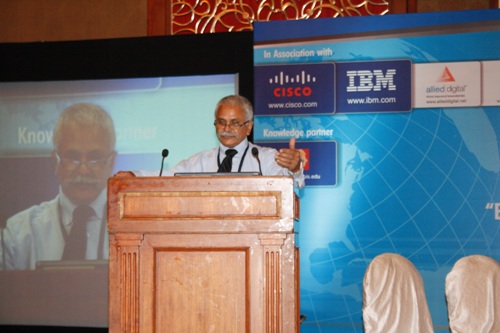
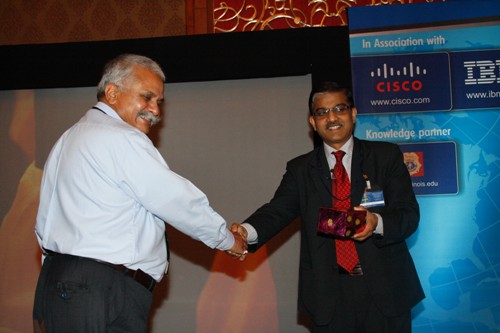
.jpg)
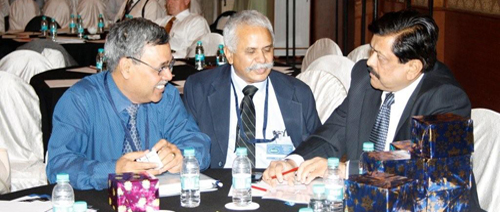
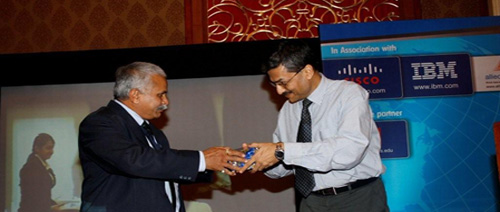
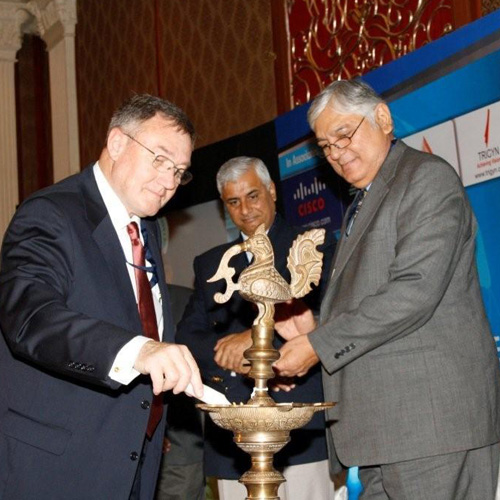
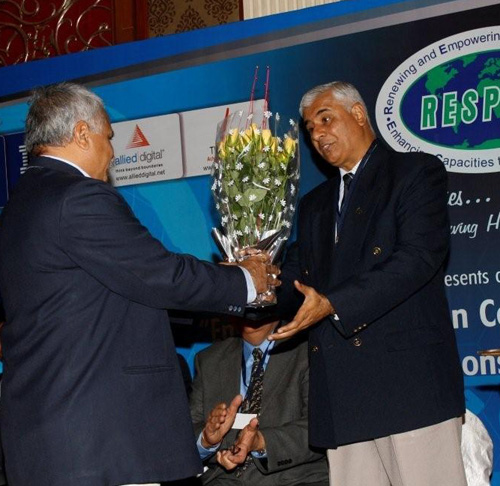
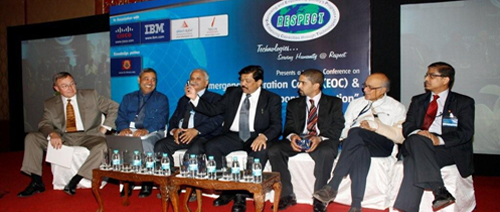
 J K Bansal - Keynote at IIEC.jpg)
.jpg)
 & Col Jaehne (IFSI)- at IIEC.jpg)






